Chipper blades are essential to keeping your lawn or garden tidy and well-maintained. They cut down on the amount of time it takes to clear the area, and they also help to reduce the amount of effort required.
To keep your chipper blades in top condition, it’s important to sharpen them regularly. This you can do using a sharpener specifically designed for chipper blades.
Chipper blades are an essential tool in any wood processing or demolition operation. These blades shred wood, wood chips, and other biomass into wood chips that can use as fuel. Woodchippers also reduce the volume of wood that you need to shred.
This reduces labor, fuel usage, and maintenance costs as one of the few tools that can shred wood like a shredder and chip it like a chipper; sharpening chipper blades should be done regularly to ensure maximum efficiency and effectiveness.
We will cover the basics of chipper blade sharpening and tips for prolonging sharpness. We will cover factors that affect sharpening chipper blades, how often you should sharpen blades, tools required for blade sharpening, ideal grain size for chipper blades, etc.
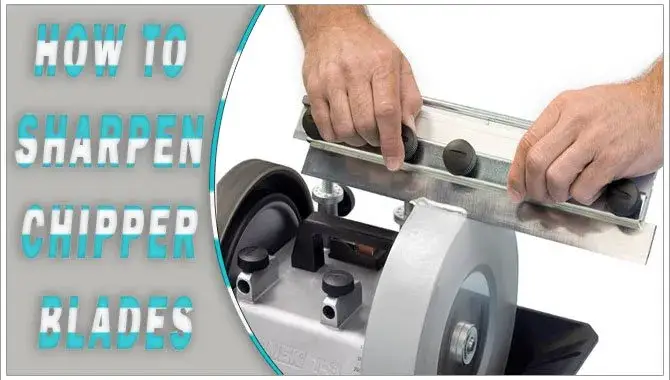
Woodchipper Blades
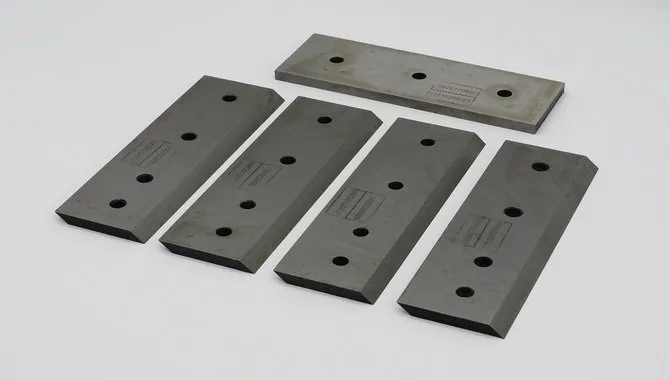
There are a few things that you need to keep in mind when it comes to sharpening your woodchipper blades. Firstly, be sure to use the correct type of sharpener. There are two main types of sharpeners: manual and electric.
Manual sharpeners are the simplest option and work by using an angle grinder or Dremel tool to sharpen the blade. They’re good for small blades that don’t require a lot of precision, but they can be time-consuming and difficult to use.
Electric sharpeners are more versatile and can use for both large and small blades. They use an electric motor to sharpen the blade at high speed, resulting in a sharper blade that lasts longer. However, they’re more expensive than manual sharpeners and require some skill to use effectively.
About Chipper Blade Maintenance
To ensure the longevity of chipper blades, it is important to maintain them properly. Sharpening chipper blades can reduce the amount of time needed for cutting and also improve the quality of the cuts. However, you must follow the instructions carefully in a sharpening kit to achieve the desired results.
A honing stone you can use to sharpen the edges of chipper blades if required, but you must use it with caution as it can dull the blade quickly. It would help if you also kept chipper blades in a dry and clean place to prevent rusting.
5 Basic Steps To Sharpen Chipper Blades
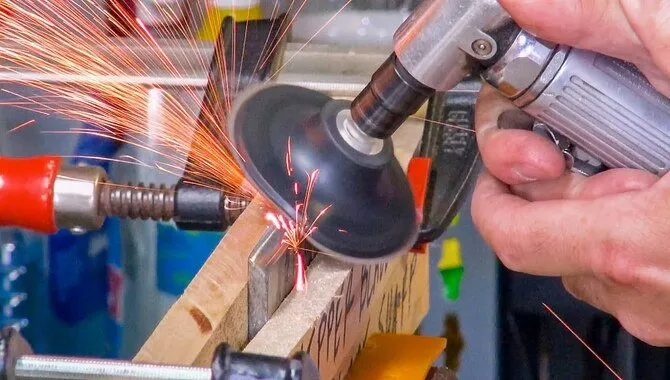
To keep your property in good condition, you’ll need to sharpen your chipper blades regularly. Not only will this ensure that your equipment is in good working order, but it’ll also improve the quality of the end product. Here are 5 basic steps to sharpen chipper blades.
1.Choose The Correct Tool
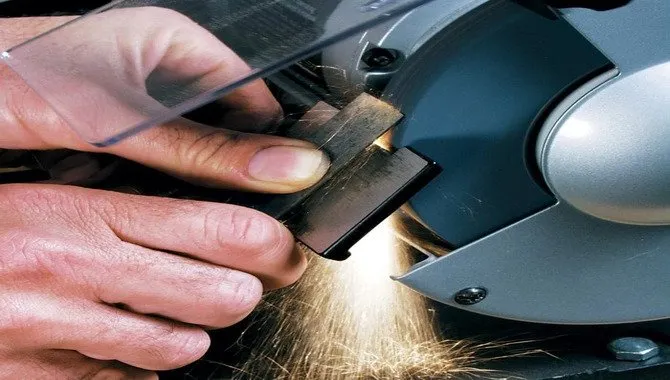
When sharpening chipper blades, you must use the correct tool. The chipper blade should sharpen using a sharpening stone. This can be a diamond sharpener or a honing rod. Both of these tools are designed to sharpen chipper blades quickly and effectively. However, you must use them carefully to prevent damage to the blade.
You must hold the chipper blade at an angle of around 20–30 degrees and in a steady grip to ensure accuracy and safety. Additionally, you must ensure that the chipper blade is clean and dry before sharpening it. This will prevent the blade from clogging up with bits of wood pulp or chips.
2.Use Fine Grit Sandpaper Or Grinding Wheel

Chipper blades are usually sharpened using coarse grit sandpaper or a grinding wheel. Though either method will achieve the desired result, coarse-grit sandpaper is more effective at quickly removing large pieces of material. This is because it has larger grains that are more easily crushed.
Once the chipper blade has been sharpened using coarse grit sandpaper, it should be kept sharp by routinely honing it using finer grit sandpaper or a grinding wheel. Honing removes burrs and other imperfections from the edge of the chipper blade, keeping it in optimal condition for cutting.
3.Remove As Little Material
Removing as little material as possible is the key to getting the best results from your chipper blades. This means avoiding cutting too deep or into large pieces and focusing on smaller, more manageable chunks. You’ll need to use the correct chipper blade for the job to achieve this. Different types of materials require different blades to achieve the best results.
For example, wood chips need an edged blade, while leaves and twigs require a smooth-edged blade. You’ll also want to ensure that the blade sharpens properly so it can cut through the material easily. By following these simple tips, you can ensure that your chipper blades are working at their best and that you can get the most out of them.
4.Eliminate Burr From Blades
Chipper blades are critical to the operation of a woodchipper, and they need to sharpen regularly to prevent them from becoming dull and burr-prone. There are a few ways to sharpen chipper blades, but the most common is grinding them with a diamond wheel. This process helps smooth out the blade’s surface, making it easier for the sawdust to fall off and less likely to create clogs.
It’s also important to keep your blades clean. If you don’t, there’s a good chance that they’ll become rusty and difficult to use. You can do this by regularly using a degreaser like acetone or hydrogen peroxide. And lastly, always make sure that you verify that your blades are sharp before using them so that you avoid any accidents or injuries.
5.Balance The Blades
Chipper blades use to cut wood, metal, and other materials. One of the key features of chipper blades is that they must balance to ensure accurate cutting. Hold the chipper blade at a 45-degree angle to balance the blades, and use your thumb and first two fingers to hold the blade in place. Sharpen the blade using a sharpening stone or an electric grinder.
This will ensure the blade stays sharp and cuts efficiently throughout its lifespan. While it is possible to sharpen chipper blades manually, it can be time-consuming and require precision and expertise. Therefore, using an electric grinder or sharpener is best to speed up the process and ensure consistent results.
Bonus Tip: How To Prolong Sharpness
If you’re looking to keep your chipper blades sharp, you can do a couple of things. First, make sure that you sharpen them regularly. Second, try using a chipper blade sharpener to ensure that they stay razor-sharp. To use a chipper blade sharpener, first, remove the blades from the machine and locate the sharpener.
It should be mounted so that it faces the blades as they go through it. You then insert the blades into the sharpener and turn it on. The sharper the blades are when they come out of the machine, the better.
Factors That Affect Woodchipper Blades
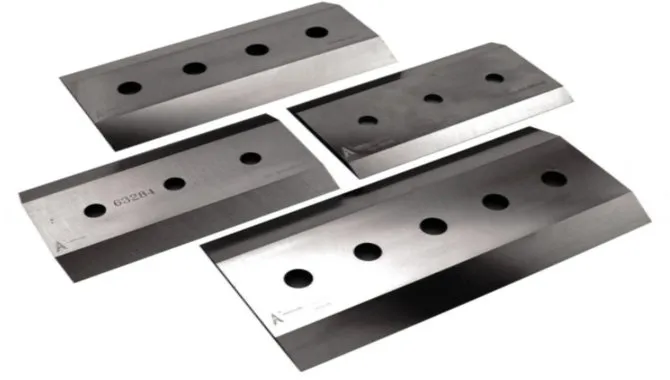
A few factors affect chipper blades, and the most important of these is the wood that’s being chopped. Chipper blades work best on the hardwood – like oak, maple, cherry, or birch – because they are dense and have a higher density than any other kind of wood.
Another important factor to consider when sharpening chipper blades is their length. Chopping lengths vary depending on the wood being chopped, but for oak, maple, and cherry, the typical length is 2-3/4 inches. The chopping length should be around 1-1/2 inches for softer woods like pine or spruce.
Finally, it’s also important to remember that blade sharpness varies from one chipper to another. For example, some chippers have V-shaped tips, while others have slicing tips. The shape of the tip affects how easily the blade can cut through different types of material. So it’s important to ensure that your chipper blade sharpens properly so it can chop materials effectively.
How Often Blades Should Be Sharpen
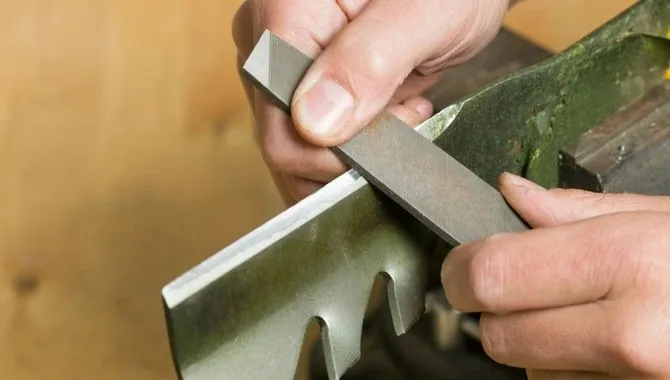
It would help if you sharpened the chipper blades regularly to ensure optimal performance. You can use a few different methods to sharpen chipper blades, but the most common is using a honing stone. To use a honing stone, you must wet it with water and place the blade against it.
You then use pressure to sharpen the blade at an angle until it’s razor-sharp. Keep in mind that this process is slow and requires some practice before you get good at it. You can also use an electric sharpener to sharpen your blades quickly and easily. However, remember that this method can damage your blades over time if not used correctly.
Conclusion
Chipper blades are essential for grinding down hardwood, tree branches, and other large pieces of wood. They work by slicing through the wood with small saw-like blades. To keep your chipper blades sharp, it is important to sharpen them regularly.
This will ensure they can cut through the wood more easily and efficiently. There are a few different ways to sharpen chipper blades: Wood chipper blades are sharpening tools that help you use less energy while producing high-quality chips. However, they require regular sharpening to ensure efficient, consistent
Frequently Asked Questions:
How Do You Sharpen A Chipper Blade At Home?
Remove the chipper blade from the machine. Inspect it to see if it needs sharpening- usually, blades that are less than 2-3/4″ wide need sharpening every 6 months or so. If you find that your blade is more than 3-1/2″ wide and has been used extensively for heavy-duty cutting, then it may require sharpening more often (every 4-6 weeks).
Should I Sharpen Chipper Blades?
Yes, it would help if you sharpened chipper blades every 6-8 months. If the blade is used extensively for heavy-duty cutting, it may need sharpening more often (every 4-6 weeks).
How Do I Know If My Chipper Blades Are Dull?
It may be dull if the blade doesn’t chop wood evenly or is difficult to sharpen. Dull blades will cause excessive wear on your chipper and require more time and energy.
Do Wood Chippers Need To Be Sharpened?
Yes, chipper blades will dull over time and need to sharpen. Blades that are less than 2-3/4″ wide should be sharpened every 6 months or so
What Should I Do After I Sharpen My Chipper Blades?
Regularly inspect the blade to ensure it is sharp and chop wood evenly. If the chipper blades are not cutting wood evenly, it may be necessary to replace them.
performance. Wood chipper blades are sharpening tools with diverse applications, and their sharpening requirements vary from user to user. To get the best cutting performance and longest blade life, follow the above steps to sharpen wood chipper blades.

I am passionate about tools and electric work. I love finding new tools and experimenting with them.

